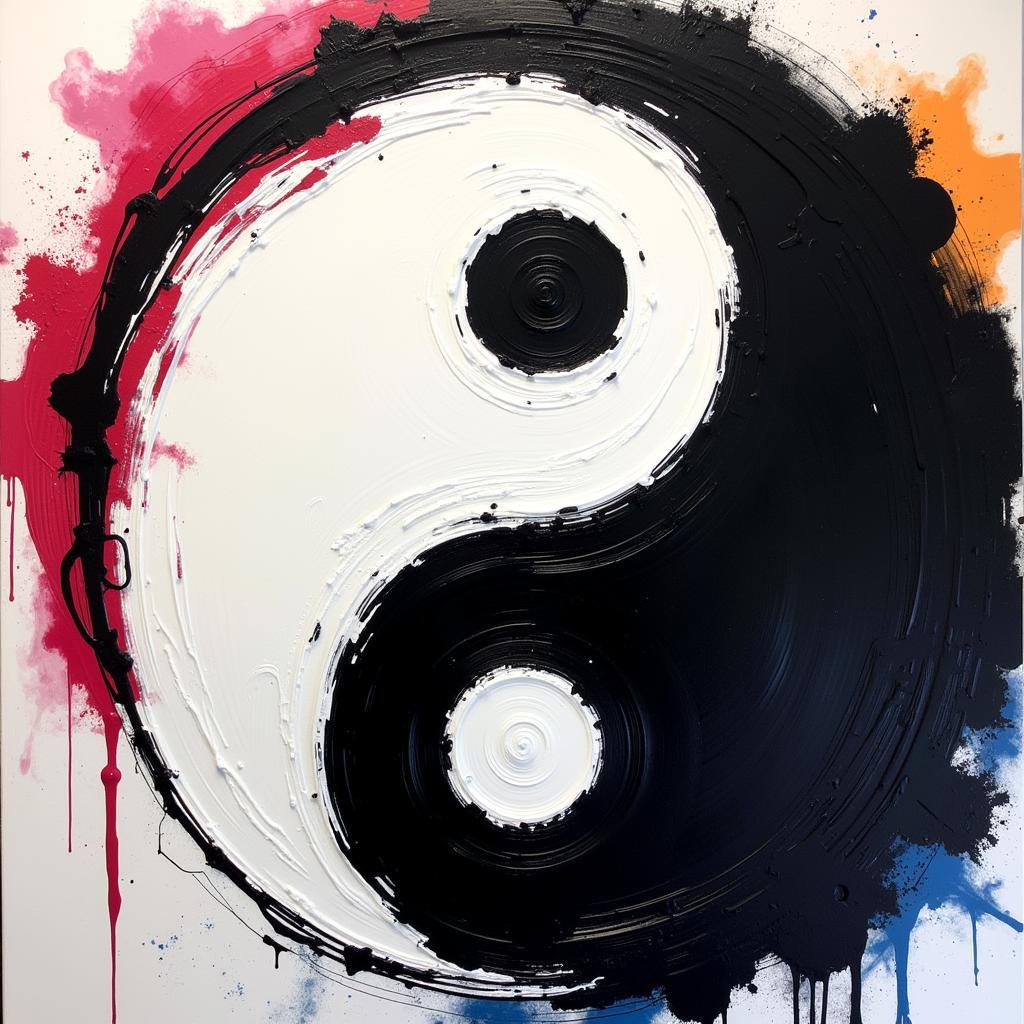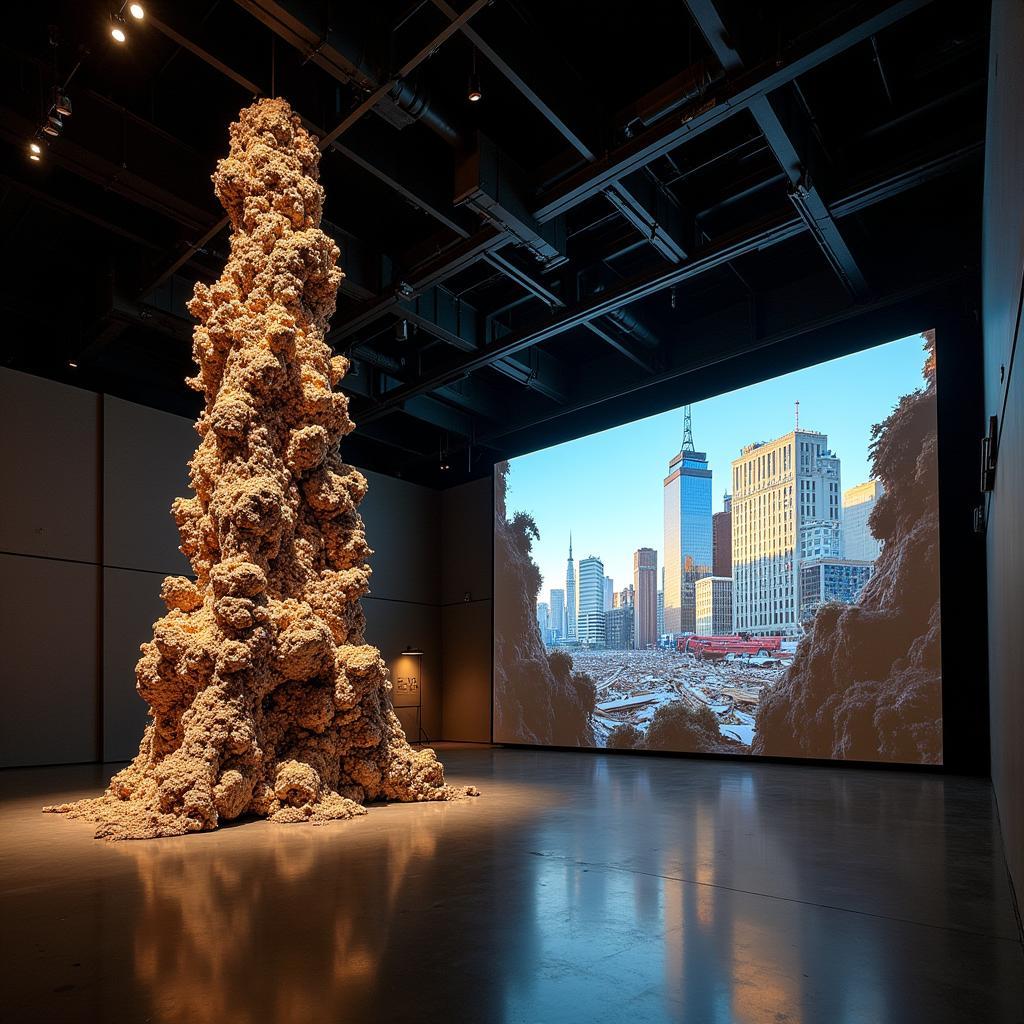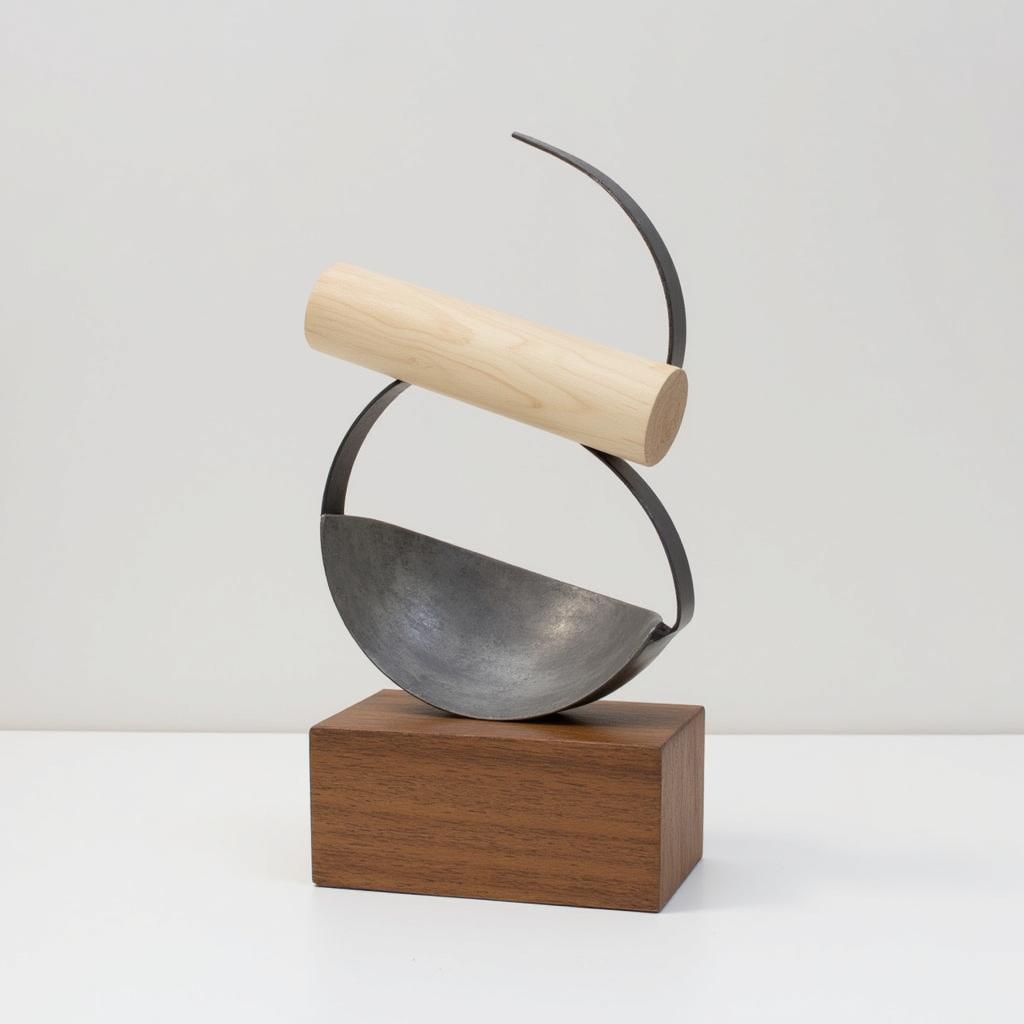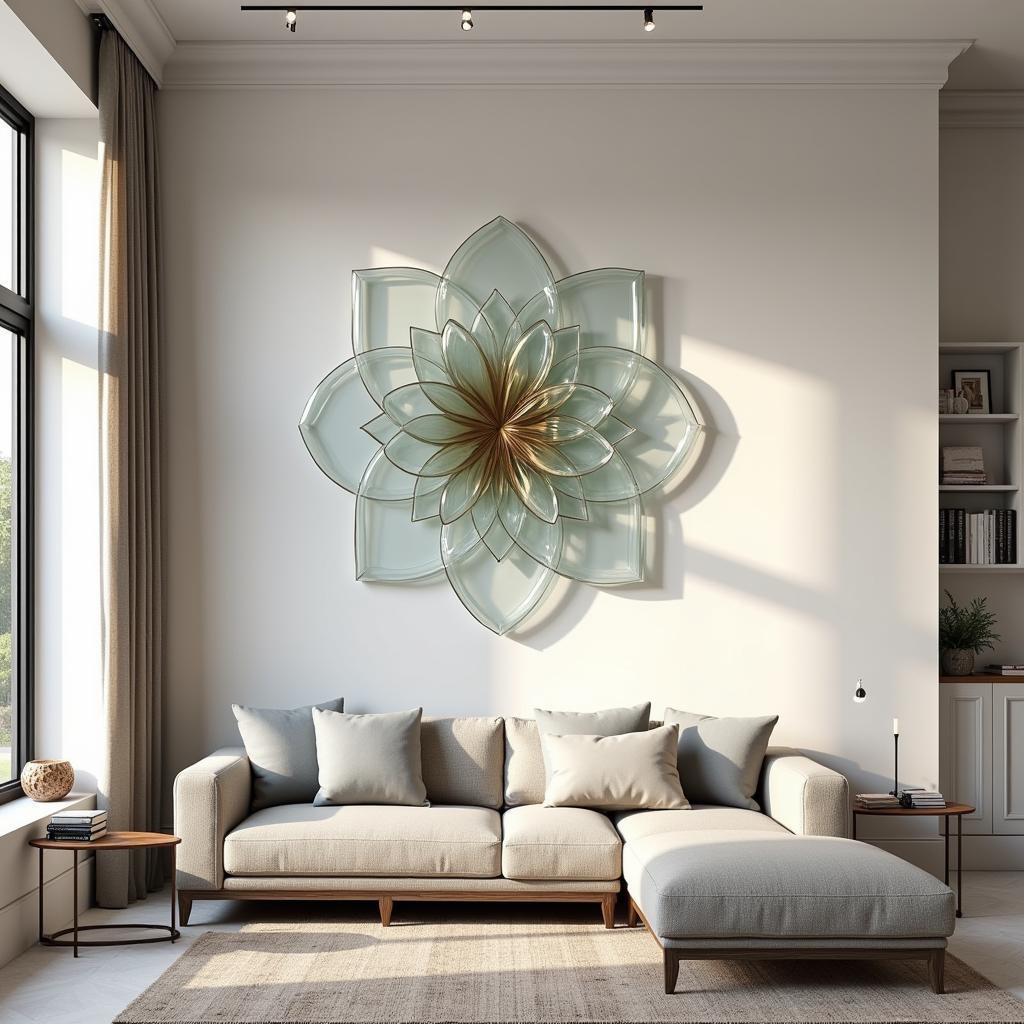Exploring the Creative Power of Opposites Art
From the moment we understand the concept of “up” and “down,” “light” and “dark,” opposites begin to shape our understanding of the world. In art, this fundamental duality takes on a powerful new meaning, inspiring artists to explore contrasting elements to create captivating and thought-provoking works. Opposites Art, in its many forms, challenges our perceptions and invites us to see the world through a new lens.
The Allure of Juxtaposition: Why Opposites Attract in Art
 Yin-yang symbol in contemporary art
Yin-yang symbol in contemporary art
Artists throughout history have been drawn to the inherent tension and visual impact created by combining contrasting elements. The interplay of light and shadow, for instance, can create dramatic depth and dimension, while the juxtaposition of smooth and textured surfaces adds visual interest and complexity. Whether it’s the stark contrast of black and white photography or the vibrant clash of complementary colors in a painting, opposites have the power to create a sense of dynamism and intrigue that captures the viewer’s attention.
Beyond Visuals: Exploring Conceptual Opposites in Art
 Conceptual art installation exploring themes of creation and destruction
Conceptual art installation exploring themes of creation and destruction
The use of opposites in art extends far beyond purely visual elements. Artists often explore conceptual opposites, such as:
- Life and death: Exploring the cyclical nature of existence and the fragility of life.
- Order and chaos: Examining the tension between structure and spontaneity.
- Nature and technology: Questioning the boundaries between the organic and the artificial.
By juxtaposing these contrasting ideas, artists encourage viewers to contemplate complex themes and consider different perspectives.
Mastering the Balance: Achieving Harmony in Opposites Art
 Abstract sculpture depicting the balance of opposing forces
Abstract sculpture depicting the balance of opposing forces
While opposites art thrives on contrast, achieving a sense of balance and harmony is crucial. Too much emphasis on one element can overshadow the other, diminishing the intended impact. Skilled artists carefully consider the weight, proportion, and placement of each element to create a cohesive and visually pleasing composition. The goal is not to create a chaotic clash but rather a harmonious fusion that celebrates the beauty of both elements.
Conclusion
Opposites art, with its captivating contrasts and thought-provoking themes, continues to push the boundaries of artistic expression. By embracing the power of duality, artists can create works that challenge our perceptions, ignite our imaginations, and remind us of the interconnectedness of all things.


